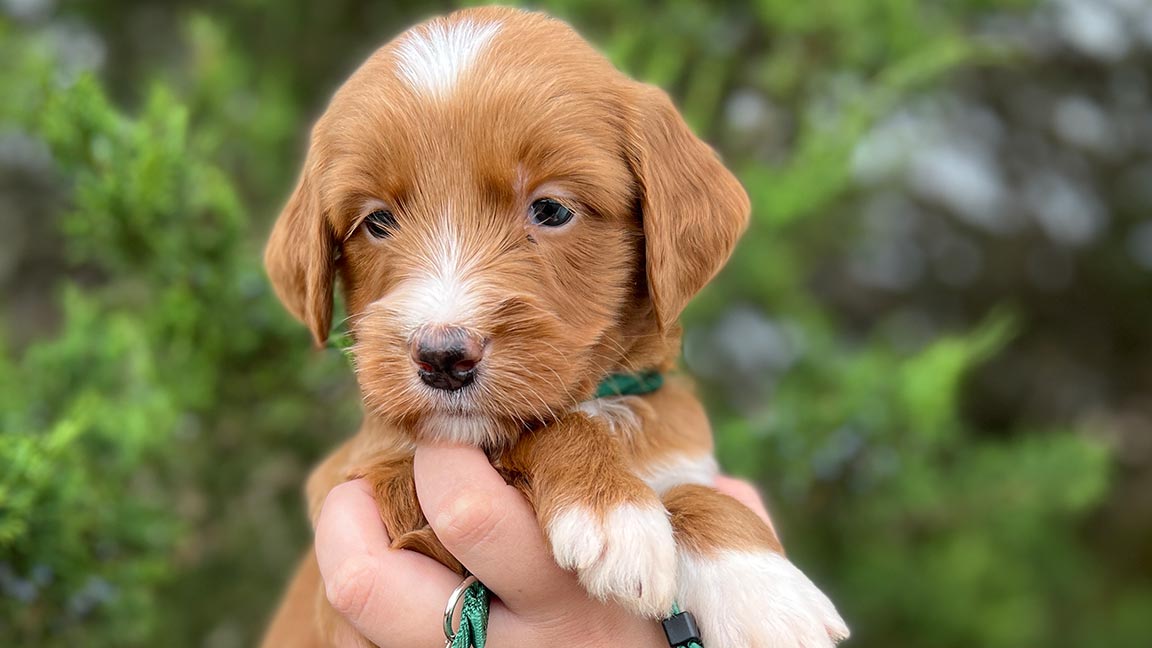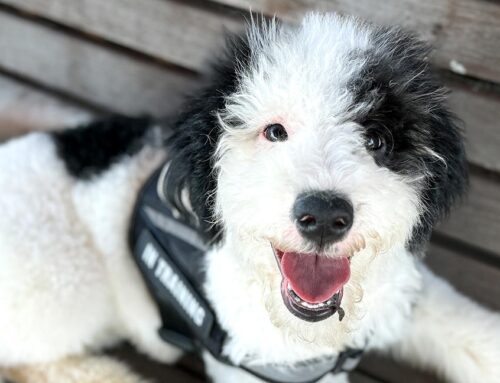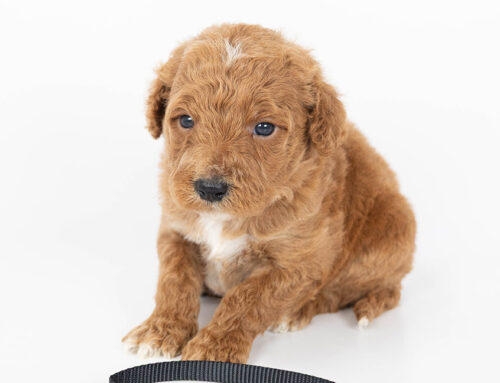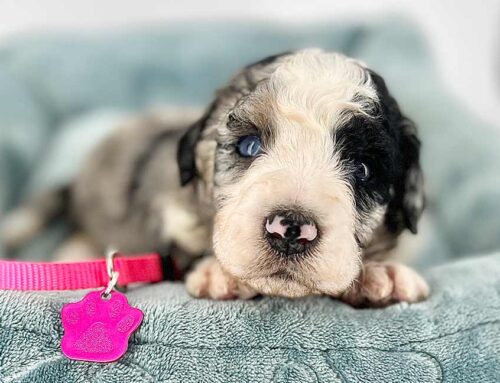The Benefits of Positive Reinforcement for Dog Training
The Benefits of Positive Reinforcement for Dog Training
At Double U Doodles, we believe that raising a happy, well-mannered partner for life starts long before your puppy ever comes home. From day one, we focus on giving each puppy the best start in life through gentle handling, socialization, and early training. A big part of this foundation is positive reinforcement, a training method that rewards good behavior rather than punishing mistakes.
It’s not just effective; it’s also the kindest, most natural way to teach your doodle how to thrive in your family.
What Is Positive Reinforcement?
Positive reinforcement means rewarding the behaviors you want to see more of. When your puppy sits instead of jumping, goes potty outside, or comes when called, you immediately reward that action with something they love, usually a treat, toy, or lots of praise. Over time, your pup learns that good behavior = good things.
Think of it as doggy motivation. Just like we might work harder if we know there’s pizza waiting at the end of a long day, your doodle will be more eager to learn if the reward is worth it.
Why Positive Reinforcement Works
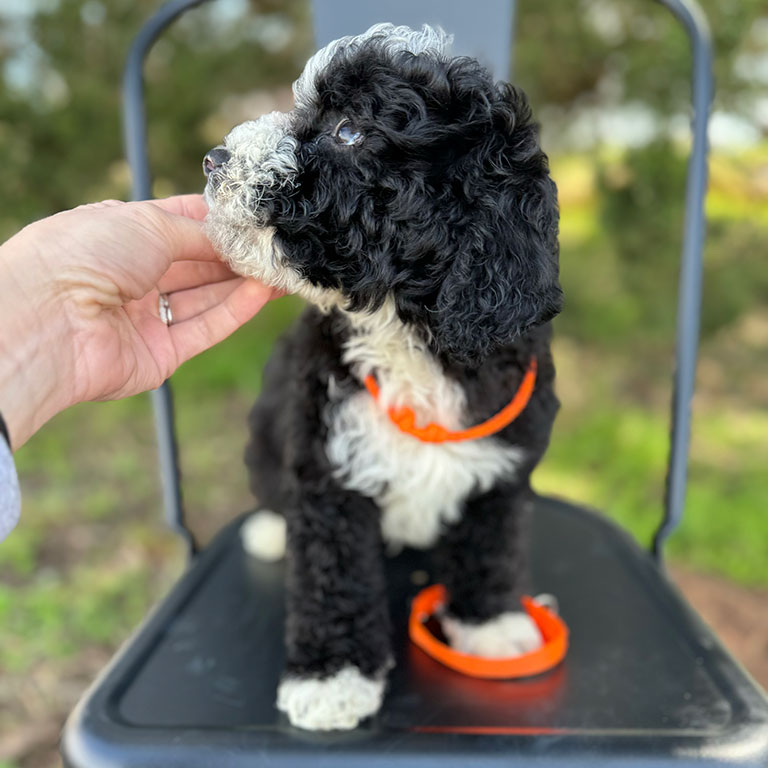 Dogs are smart, but they don’t think like people. They learn best through consistency and clear feedback. Positive reinforcement:
Dogs are smart, but they don’t think like people. They learn best through consistency and clear feedback. Positive reinforcement:
- Builds trust: Your doodle learns that you are a source of comfort, love, and rewards, not something to fear.
- Creates happy learners: Dogs who train with positive reinforcement are excited to practice because it’s fun.
- Reduces stress: There’s no fear of punishment, so your puppy feels safe trying new things.
- Encourages bonding: Training becomes a shared game that strengthens your connection.
Simply put, it turns training into a joyful experience for both of you.
Positive Reinforcement in Action at Double U Doodles
Our puppies are introduced to positive reinforcement before they even leave our home. Here’s a peek into how we start shaping confident, well-mannered doodles from birth to go-home day:
- Birth to 3 weeks: Puppies are gently handled and exposed to early neurological stimulation (ENS), which helps them adapt to new experiences later in life. Even at this stage, they’re learning that human touch brings comfort.
- Weeks 3–4: Puppies are desensitized to different textures and sounds. We pair these new experiences with comfort and reassurance, so they learn that the vacuum, blender, or even a slamming door isn’t scary.
- Weeks 4–6: As puppies begin weaning, we encourage natural instincts with doggy door training, teaching them to potty outside. We praise and guide them as they explore independence.
- Weeks 6–8: Puppies begin short periods of crate training, paired with positive reinforcement, so the crate feels safe and cozy. This helps them develop self-soothing skills and reduces stress when it’s time to transition to their forever homes.
- Weeks 8–10: We begin our complimentary 2-week puppy imprinting course that builds on this foundation. Using positive reinforcement, we introduce basic commands, manners, and confidence-building exercises that prepare your puppy for lifelong success.
By the time your puppy comes home, they already understand that learning is rewarding and that people are their biggest cheerleaders.
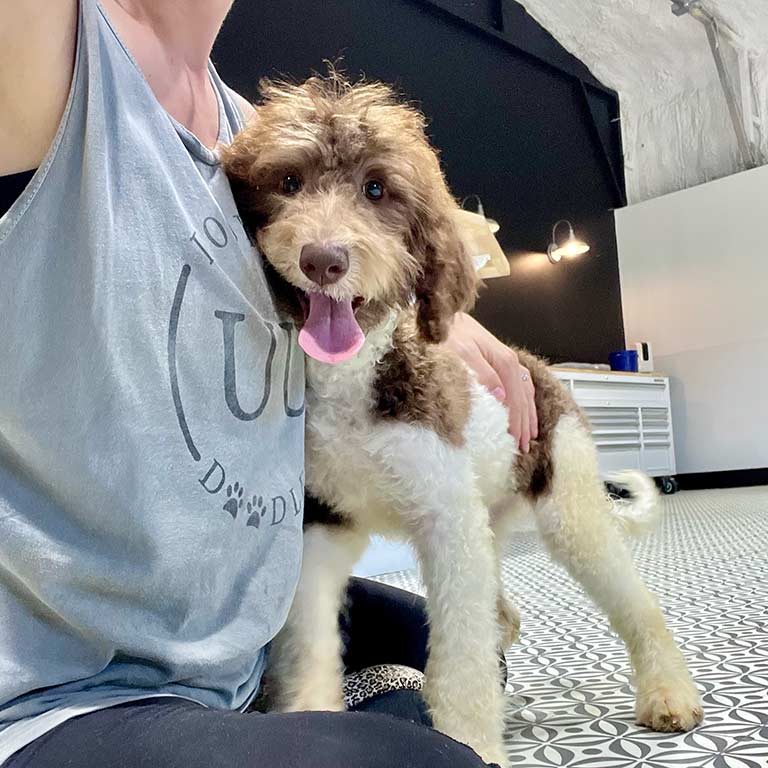
Benefits You’ll Notice at Home
When you continue with positive reinforcement after your puppy joins your family, you’ll notice lasting benefits:
- Faster learning: Puppies catch on quickly when they know what earns them rewards.
- Better manners: Jumping, nipping, or other unwanted behaviors fade when calm, polite behavior is rewarded instead.
- Confidence in new situations: Puppies trained with encouragement are more adaptable in new environments.
- Stronger bond: Your puppy sees you as a safe, trusted leader and a partner in fun.
Tips for Using Positive Reinforcement with Your Doodle
 Be consistent: Reward the behavior you want every time in the beginning. Consistency makes learning stick.
Be consistent: Reward the behavior you want every time in the beginning. Consistency makes learning stick.- Use high-value rewards: Find what your doodle loves most: special treats, squeaky toys, or belly rubs. Save the best rewards for the most complex tasks.
- Keep sessions short and fun: Five minutes of training is better than a 30-minute marathon. Puppies learn best in small bursts.
- Mark the moment: Use a cheerful “yes!” or a clicker to mark the exact behavior you’re rewarding. This helps your pup connect the dots.
- End on a win: Always finish training on a positive note so your puppy is eager for next time.
Why We Love Positive Reinforcement
At Double U Doodles, we’ve seen firsthand how positive reinforcement sets puppies up for lifelong success. It transforms training from a chore into a joy. More importantly, it helps our Bernedoodles and Sheepadoodles grow into confident, well-adjusted family companions.
After all, a dog that learns through love and encouragement doesn’t just follow commands, they trust you, respect you, and thrive by your side.
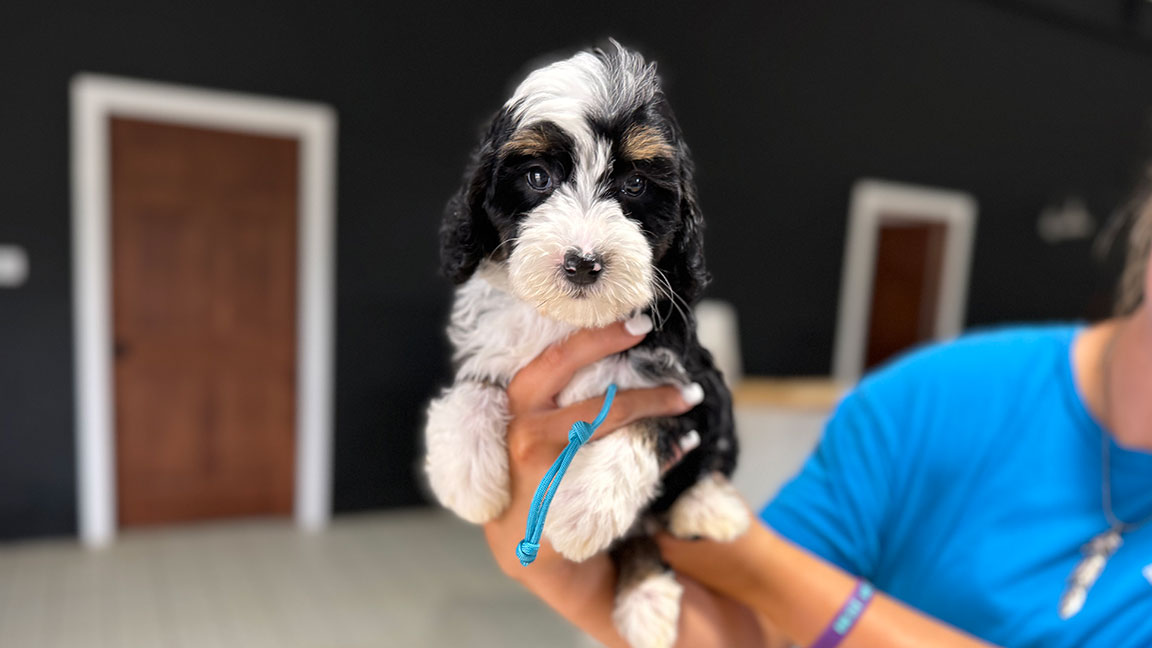
Final Thoughts
Training your doodle is about so much more than teaching tricks; it’s about building a relationship. Positive reinforcement is the key to shaping good behavior while deepening your bond. With consistency, patience, and plenty of treats, you’ll have a doodle who’s not only well-behaved but also eager to learn and full of joy.
And if you’re ready to experience the magic of one of these sweet, smart, floppy-eared pups, don’t forget to check out our Bernedoodle puppies and Sheepadoodle puppies. Your perfect training partner may already be waiting for you.
FAQ About Positive Reinforcement
What if my puppy ignores treats?
Not all rewards have to be food! Some doodles are more motivated by toys, playtime, or even a good belly rub. Find what excites your puppy most and use that as their reward.
Can I ever say “no” when my dog misbehaves?
Yes, but keep it simple and calm. The key is to redirect to a desired behavior and reward that instead of focusing on punishment. For example, ask for a sit if your pup is jumping, then reward the sit.
Is positive reinforcement enough to stop bad behaviors?
In most cases, yes. By reinforcing good behavior consistently, unwanted habits fade away. Patience and timing are crucial, but positive reinforcement is proven to work long-term.
When should I start positive reinforcement training?
Right away! Puppies can begin learning basic commands and manners as soon as they come home. The earlier you start, the easier it is to shape good habits.
Can older dogs benefit from positive reinforcement too?
Absolutely. Dogs of all ages respond to encouragement. It may take a little longer for older dogs to unlearn certain habits, but positive reinforcement is effective at any age.
Do I need a professional trainer to use positive reinforcement?
Not necessarily. Many families successfully use positive reinforcement at home. That said, working with a trainer who uses this method can give you extra tools and confidence.

